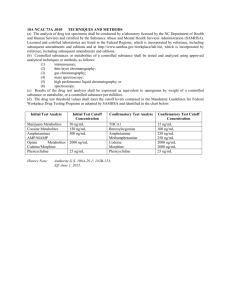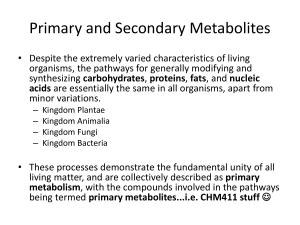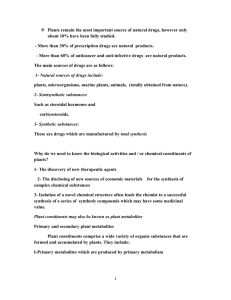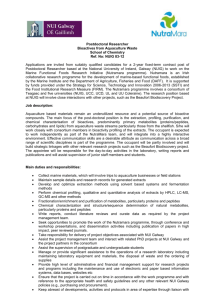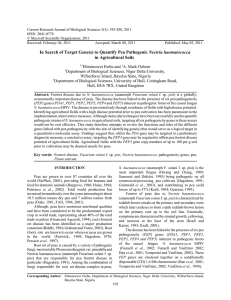Shocking Plants Produces Useful Chemicals
advertisement
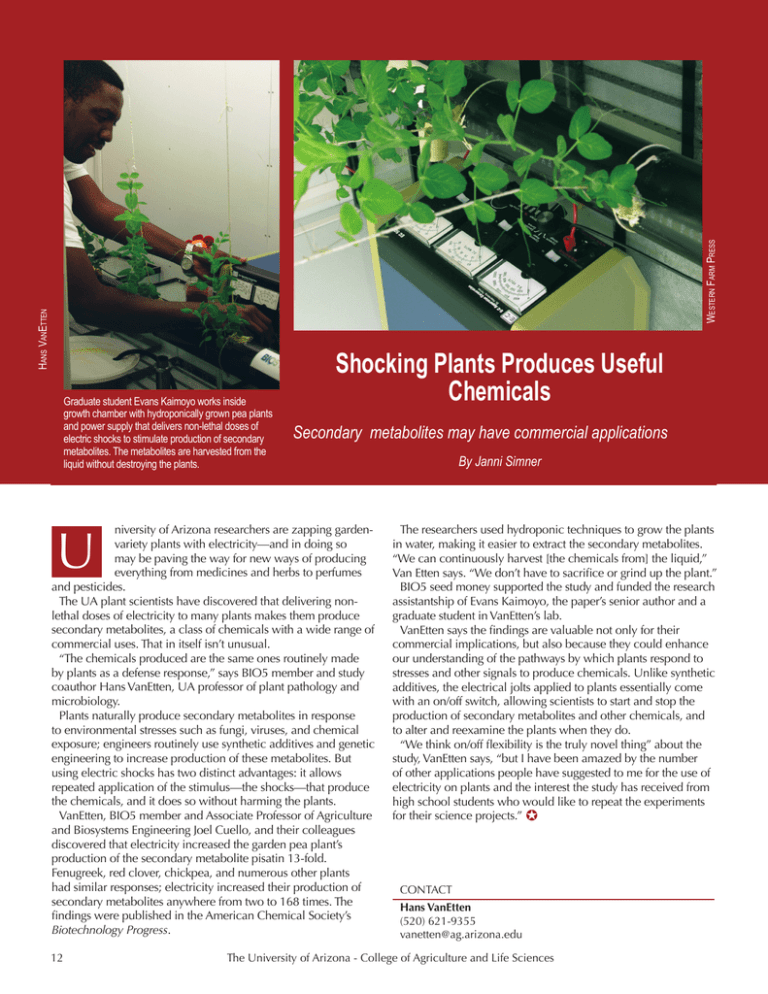
Western Farm Press Hans VanEtten Graduate student Evans Kaimoyo works inside growth chamber with hydroponically grown pea plants and power supply that delivers non-lethal doses of electric shocks to stimulate production of secondary metabolites. The metabolites are harvested from the liquid without destroying the plants. U Shocking Plants Produces Useful Chemicals Secondary metabolites may have commercial applications niversity of Arizona researchers are zapping gardenvariety plants with electricity—and in doing so may be paving the way for new ways of producing everything from medicines and herbs to perfumes and pesticides. The UA plant scientists have discovered that delivering nonlethal doses of electricity to many plants makes them produce secondary metabolites, a class of chemicals with a wide range of commercial uses. That in itself isn’t unusual. “The chemicals produced are the same ones routinely made by plants as a defense response,” says BIO5 member and study coauthor Hans VanEtten, UA professor of plant pathology and microbiology. Plants naturally produce secondary metabolites in response to environmental stresses such as fungi, viruses, and chemical exposure; engineers routinely use synthetic additives and genetic engineering to increase production of these metabolites. But using electric shocks has two distinct advantages: it allows repeated application of the stimulus—the shocks—that produce the chemicals, and it does so without harming the plants. VanEtten, BIO5 member and Associate Professor of Agriculture and Biosystems Engineering Joel Cuello, and their colleagues discovered that electricity increased the garden pea plant’s production of the secondary metabolite pisatin 13-fold. Fenugreek, red clover, chickpea, and numerous other plants had similar responses; electricity increased their production of secondary metabolites anywhere from two to 168 times. The findings were published in the American Chemical Society’s Biotechnology Progress. 12 By Janni Simner The researchers used hydroponic techniques to grow the plants in water, making it easier to extract the secondary metabolites. “We can continuously harvest [the chemicals from] the liquid,” Van Etten says. “We don’t have to sacrifice or grind up the plant.” BIO5 seed money supported the study and funded the research assistantship of Evans Kaimoyo, the paper’s senior author and a graduate student in VanEtten’s lab. VanEtten says the findings are valuable not only for their commercial implications, but also because they could enhance our understanding of the pathways by which plants respond to stresses and other signals to produce chemicals. Unlike synthetic additives, the electrical jolts applied to plants essentially come with an on/off switch, allowing scientists to start and stop the production of secondary metabolites and other chemicals, and to alter and reexamine the plants when they do. “We think on/off flexibility is the truly novel thing” about the study, VanEtten says, “but I have been amazed by the number of other applications people have suggested to me for the use of electricity on plants and the interest the study has received from high school students who would like to repeat the experiments for their science projects.” CONTACT Hans VanEtten (520) 621-9355 vanetten@ag.arizona.edu The University of Arizona - College of Agriculture and Life Sciences

